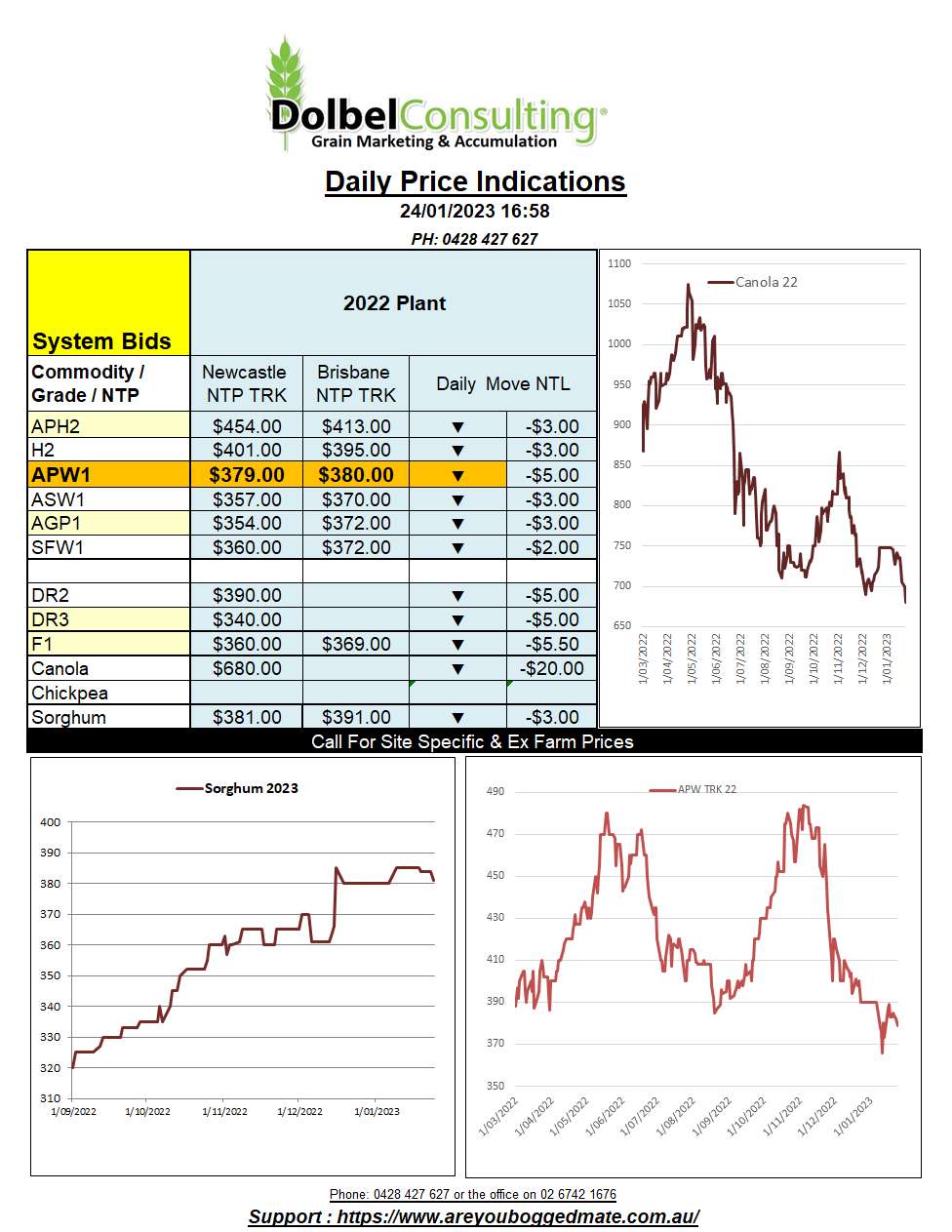24/1/23 Prices

US wheat futures were sharply lower in overnight trade. Hard red winter wheat lead the market lower, shedding 27.5c/bu on the nearby and 25.25c/bu in the December 23 slot. Minneapolis spring wheat wasn’t far behind with Chicago soft red winter wheat falling roughly AUD$11.26, the move likely to be exacerbated by the stronger AUD against the USD. The AUD move in itself equivalent to a reduction per tonne of about AUD$2.33.
A quick look at World Ag Weather shows 7-day totals across the HRW belt in the US of roughly 10 – 30mm. Falls were generally heavier across southern Nebraska, eastern Kansas and NE Oklahoma, not the driest parts of the HRW belt. Texas missed out. The 7-day forecast predicts some further falls across much of Oklahoma and much of eastern Texas for the week ahead.
Rain in Argentina was considered one of the more bearish influences on grains. Cordoba saw 20-80mm over the last week. Good falls were also reports in Santa Fe and Buenos Aires. Good news for those wanting to sow wheat this autumn and those with summers crops that are trying to enter their reproductive phase. The forecast includes more good falls for later this week, with 20-40mm across all the major grain areas.
The rainfall in Argentina was considered more bearish to the corn and soybean markets, but wheat futures were caught up in the technical selling across corn and soybean futures at Chicago.
There is a lot happening in the financial markets. Talk of Brazil and Argentina introducing a common currency. Talk of China, Russia, India, Iran, and Brazil introducing a common gold backed currency. One might expect that if Argentina and Brazil are to share a common currency than they too could be included in the BRICS plan. South Africa and S.Arabia are also considering the advantages and disadvantages of the BRICS idea. In the short term though much will hinge on whether the US FED continue to raise interest rates in February. Failure to do so could rally the USD, increasing inflation.
